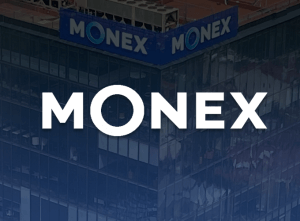The Fourth Industrial Revolution (4IR) Takeover: IoT and Quantum-Resistant Blockchains Are Setting the Trend
The 21st century ushered in a new era following the debut of the internet and Web 2.0 applications. Today, most people have interacted with search engines such as Google and social media platforms, including Facebook and Twitter. While the internet was a hallmark debut, more technological innovations have come up, marking the fourth industrial revolution (4IR)

This new line of technologies features the likes of Artificial Intelligence (AI), blockchain, and the Internet of Things (IoT). Despite their value proposition, there have been arguments that some of these technologies might soon replace most human roles in today’s industries. According to a report by PWC, it is likely that close to 30% of the jobs will be automated by the mid-2030s.
On the brighter side, however, these emerging technologies are proving to have a significant value proposition. IoT is connecting more devices than ever before, while AI is being used to improve machine learning across various industries, including healthcare.
As for blockchain, the distributed ledger technology has paved the way for decentralized markets, featuring digital assets such as Bitcoin and upcoming niches like Decentralized Finance (DeFi) and Non-fungible Tokens (NFTs).
The Fourth Industrial Revolution (4IR)
While machines may take some time to replace human roles, it is better to prepare for what’s to come by jumping into the right technologies. The fourth industrial revolution is already setting the stage for this shift through the aforementioned technologies.
In the field of IoT, there have been a lot of developments, with the invention of smart homes and cities. However, most people are still not aware of how to become part of these growing networks. Thanks to the value proposition of combining IoT and blockchain, it is now almost seamless to participate in this growing ecosystem through projects such as Minima Global.
The Minima global initiative is one of the IoT-oriented projects that leverage blockchain technology to introduce a decentralized ultra-lean protocol that can fit on an IoT or mobile device. Essentially, anyone across the globe can run a full constructing and validating IoT node from their mobile devices.
This initiative by Minima seeks to create a more decentralized IoT network where value is transferred within a censorship-resistant environment. In doing so, Minima is optimistic about shaping the future of IoT networks by building a scalable ecosystem.
Quantum-Resistant Blockchains
Similar to IoT innovations, there have been significant developments in blockchain ecosystems. Nonetheless, several shortcomings currently face this burgeoning niche, including the threat of quantum computers. At the core, most blockchain projects rely on cryptography to encrypt or decrypt information through a combination of complex and sophisticated algorithms.
With quantum computing gaining popularity, the Qubit built computers will likely crack the binary algorithms run on classical computers. To get a better picture, a classical computer utilizes bits in the form of transistors hence existing in one of the binary functions (0 or 1). On the other hand, quantum computers leverage Qubits which means they can take either of the binary functions or both simultaneously in a superposition state.
This threat of quantum computing is now forcing innovators in the blockchain industry to prepare for the future. As a result, some upcoming initiatives, such as the QANplatform, have introduced a quantum-resistant hybrid blockchain platform. The project seeks to build a futuristic blockchain network that will survive the threat of quantum computers while allowing stakeholders to build decentralized projects, including DApps and DeFi applications.
Unlike most existing blockchain networks, QANplatform is built using a post-quantum cryptographic algorithm under the Rust programming language. In addition, the platform leverages a Proof-of-Randomness (PoR) algorithm, positioning it as one of the greenest blockchain networks. This is one of a few blockchain projects that have taken the lead in the preparation of a quantum computing world.
Looking Into the Horizon
As the adage goes, change is often inevitable; likewise, the adoption of modern-day technologies such as blockchain and IoT is becoming an expensive affair to ignore. While some of these innovations might replace human roles, their general value proposition is far greater than the projected replacements. If anything, blockchain and IoT have created more opportunities for people globally to become part of the futuristic world.
That said, it would be better for stakeholders to invest more in research and development to advance the potential of the 4IR. Currently, initiatives under these lines of technologies have garnered the support of tech industry veterans and other notable players such as financial institutions and governmental agencies. However, there is still a long way to go, given the pace of innovation and disrupting technologies like quantum computing.
Conclusion
Though still early to predict how the 4IR will shape the world, it is clear that the featured technologies are finding fundamental niches. Blockchain, in particular, has set the platform for a decentralized monetary ecosystem. Meanwhile, IoT innovations are connecting more devices, changing the narrative that only human beings can efficiently exchange information. As both technologies become widely adopted, chances are higher that innovators will integrate them to continue improving the state of existing ecosystems.










